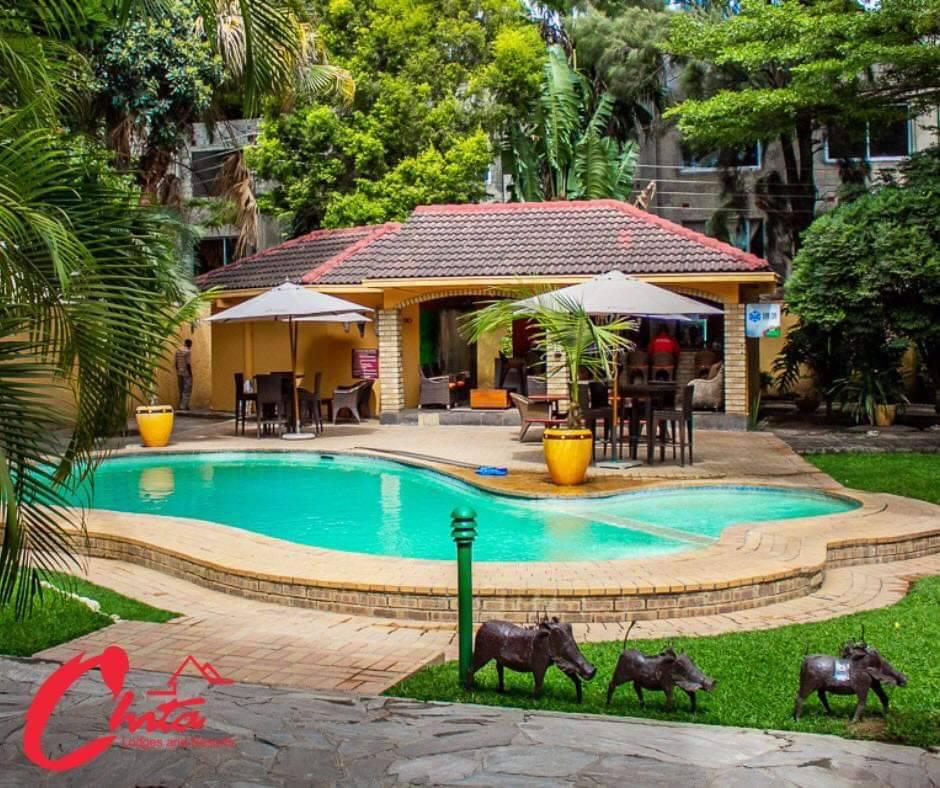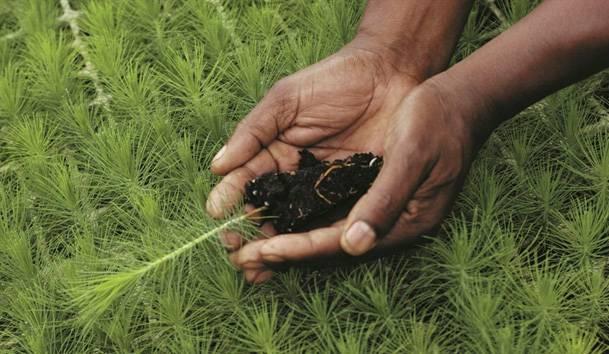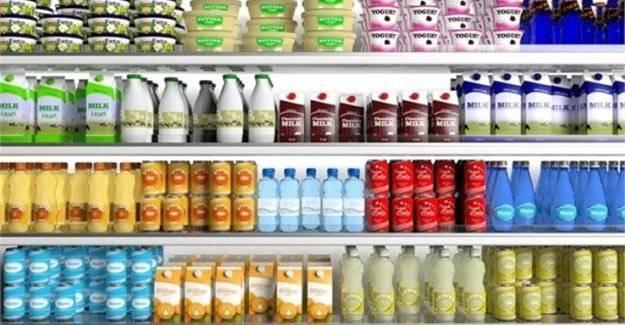
22 minute read
Contents
Mining equipment at Kansanshi mine in North Western Province of Zambia.
LME Copper hits 8yr high, the new ‘Copperbelt of Africa’ to drive Zambia’s economic
Advertisement
recovery
Supply angst as a consequence of suppressed of Congo – DRC and Zambia which shuld be able to production possibilities in South America as leverage off the risk on rally to balance their fiscal COVID cases persist while a simultaneous positions after a tough year dented by corona virus demand surge for the metal used in electric effects. wire manufacture globally, has sent copper prices to 8year highs. Copper on the London Metal Exchange The supply side continues to be weighed by – LME has rallied 75% from March $4,343 a tonne decongestion of mines due to health protocols to lows when disease pandemic hit China the hardest curb COVID spread in the South American mines resting in acute supply disruptions. Trading for while the demand side has been propelled by an $7,677 a tonne on the London commodity bourse, array of factors to include greenfield projects such as the red metal recovery has brightened prospects for the electric car era prospects that will require copper producing nations such as the Democratic Republic wire production to transmit charge, a quicker 37 Zambia Inc Magazine
rebound in factory activity in China and general recovery in global business pulse evidenced by prints above 50 as measured by purchasing managers index. Copper continues to be used as a bell weather for global economic pulse.
Vaccine breakthrough also contributing to base metal demand. The world is risk-on with appetite for riskier appetite growing following news around COVID vaccines such as Moderna, AstraZeneca, Oxford and BioNtech that have proved to be upto 95% effective. The world has sought this breakthrough which has shaped year end fortunes pricing hope into a fragile global economy. Demand for riskier assets includes that for base metals such as copper which remains the worlds barometer for global pulse whose spike in price reflects growth expectations which have in turn taken away gold shine and dollar asset demand.

The copper producers debt quagmire. Zambia, Africa’s second largest copper hotspot has so far produced 646,111 tonnes as at September up from 590,321 tonnes last year representing a 9.5% increase year on year according to Mines Minister Richard Musukwa. The copper producer faces debt repayment hurdles with various creditor classes including dollar bond holders, Chinese banks and other commercial lenders. Recently, the Southern African nation could not make good a $42.5million coupon payment on a 2024 Eurobond in what it called a treatment of all its creditors ‘pari-passu’ to mitigate complicating debt deferment negotiations with Chinese creditors. With fiscal fragilities and balance sheet vulnerabilities, the rating agencies lowered Zambia’s credit assessment to selective default (SD) for Standards and Poor’s while the Southern African nation is rated ‘Ca’ for Moodys.


Zambia’s debt stands at $11.97billion of which $3billion relates to Eurobonds maturing in 2022, 2024 and 2027 respectively. The red metal producer has been a beneficiary of debt deferment b y Paris Club to June 2021 nodded by the G20 and is yet to tap into the $81million reprieve on interest payment. At the recently ended G20 summit, a new twist to Chinese debt workaround through the Paris Club was agreed on while the World Bank and Washington based lender the International Monetary Fund warned against the 20 nation block doing too little to address debt burden of emerging markets (EM’s). As a result of default and thereof perceived wane in sentiment, asset and currency sell-off pressure have mounted adding transfer and convertibility (T&C) risk burden to the operating environment.
Zambia’s economic recovery path is still strongly linked to the mining sector whose prospects remain bright especially with key projects underway in the North Western part of the country dubbed the new ‘Copperbelt of Africa.’ A surge in prices on the London Metal Exchange – LME to levels last seen 8years ago spells stronger earnings capacity for Zambian mines entailing higher tax revenue base for the authorities to meet their debt repayment burdens. Two billion ($2billion) worth of projects are on the cards namely the Lubambe and Kansanshi S3 mines which will be game changers for Zambia between the 2024-2028 periods. However, the mines still bemoan the mineral royalty non – tax deductibility a double taxation methodology that entails tax applied at both production and income level which therefore constrains the mining industries propensity to invest in both exploration and expansion.
Gold detecting device
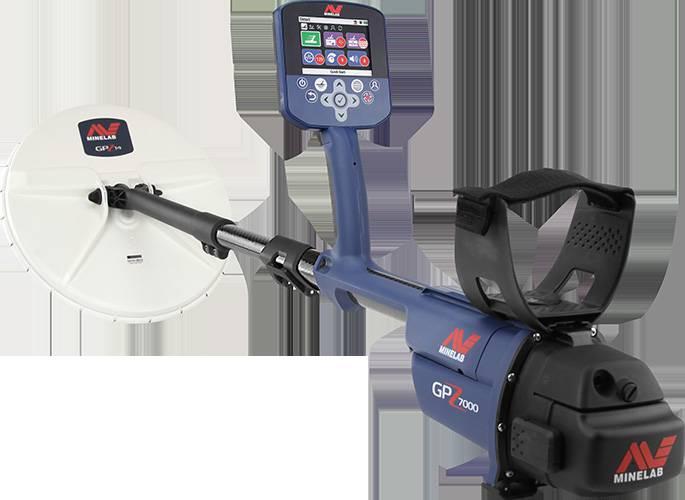
At a recently held Economics Association of Zambia Indaba dubbed The Way Forward for Zambia Post Default, the Chamber of Mines said the mines were ready to help drive Zambia’s ‘V’ shaped recovery but this would come at a cost. Chamber of Mines Chief Executive Officer – Sokwani Chilembo said the mines were more interested in a stable value added tax (VAT) cycle than a central bank Targeted Medium Term Refinance Facility, a reform in the tax regime away from non – tax deductibility of mineral royalties and policy stability. These three factors would improve the investment climate of the sector in its quest to increase production to surpass the flows from mining taxes currently paid directly to exchange market as it would help address the
DRC. Asides the mines, the supply chain was also key in boosting economic activity.
Infrastructure a boost in mining logistics
Infrastructure is a key component in supporting logistics for the mining sectors especially in turbulent economic times as Zambia is in. The newly commissioned Kazungula bridge has since improved traffic flow on the Southern African corridor while the country explores other routes to such to ports of Dar-es- salaam and Lobito bay given the challenges on the South African corridor faced with periodic purported xenophobic attacks on trucks. There is shareholding to the Zambian government. Recently
need for projects such as the North Western Rail to be expedited to allow for ports like Lobito bay in Angola to be easily accessible while investment in rail infrastructure and equipment is urgent to actualize the Statutory Instrument Number 7 that seeks to decongest the road networks yet encourage use of rail for upto 30% bulk cargo from 5-8% prior levels.
The North Western province surface mines are the future of Zambia’s mining production compared to aging assets that have lower copper grades underground in the Copperbelt province. The offer higher ore grades and are more attractive. Despite energy woes the country faces, power supply to the mines for smelting purposes and water pumping has remained untempered with. With the 750MW mining prospects will receive a boost in outlook coupled with well positioned smelting capacity of concentrates at Mopani Copper Mines, Kansanshi Copper Mine, Chambeshi Metals and Konkola Copper Mine. Psychologically, it is expected that most functional mines will ramp-up production to tap into the copper price rally curve and when this happens, benefits will trickle to the treasury chest to help with not only improving cash flow position of the state but will also shore up foreign exchange reserves for which Zambia depends on mining for 75% of its flows.
The Economics Association of Zambia in its presentation at the Indaba cited the need for dollar the authorities to be channeled through the foreign current backlogs the market faces. Dollarization of mining taxes and paying directly to the authorities addresses foreign currency supply needs of government yet sucks 45-55% of dollars from the open market causing imbalances in the market, the EAZ cited.
Mining sentiment still fragile
Zambia’s mining sentiment still grapples with downside risk such as litigation on going for Vedanta’s Konkola Copper Mine (KCM) after liquidation proceedings were commenced by ZCCM-IH and the future of Glencore’s Mopani Copper Mine (MCM) after a stalemate on its attempt to place the mine on care and maintenance leading to the majority shareholder opting to sell its its Kafue Gorge Lower (KGL) set to complete by 1H21,
the court of appeal prescribed that parties go the arbitration route overruled an earlier high court judgement on liquidation proceedings commenced against KCM. The Mines Ministry hinted that it would be concluding the Mopani takeover in a months time though the mode of finance was vague.
MINERS processing copper at one of the mines on the Copperbelt.
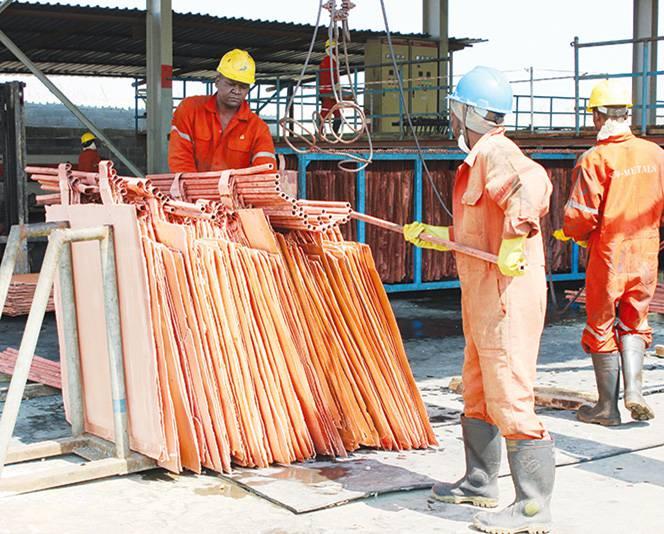
COPPER MINING


Manufacturing
Virtual Manufacturing Indaba to gather experts from across Africa Leading figures within sub-Saharan Africa’s manufacturing sector will convene virtually at the Manufacturing Indaba 2020 - taking place online between 9-10 December - to debate pressing issues impacting the region’s industrial landscape.
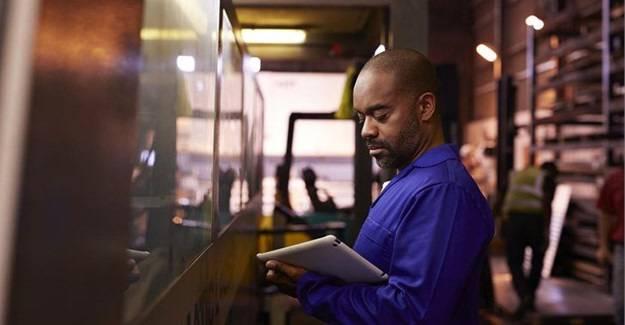
Due to safety concerns and restrictions resulting from the Covid-19 pandemic, the event is being held virtually, at no cost to attendees, to allow companies and clients to interact safely with each other and keep their business goals on track. All the Provincial Manufacturing Indaba events and the East Africa edition have been postponed to the second half of 2021.
Discussions will underscore the manufacturing sector’s innovations, leveraging special economic zones for African industrialization and integration, exploring near and long-term prospects for technological advancements such as the implementation of Industry 4.0 and where digitalization plays a more prominent role.
The Manufacturing Indaba will steer a host of dialogues focused on key issues impacting manufacturing, especially with the advent of the pandemic globally. Some of the confirmed speakers who will exchange perspectives at the conference include:
• Francisco Betti, World Economic Forum, Geneva • Roseta Mwape-Chabala, Metal Fabricators of Zambia (ZAMEFA) • Mmantlha Sankoloba, Botswana Exporters & Manufacturers Association • Kaashifah Beukes, Saldanha Bay Industrial Development Zone • David Romero, Tecnológico de Monterrey, Mexico • Sherrie Donaldson, African Innovators • Dr. Kamau Gachigi, Gearbox, Kenya • Lerato Mataboge, Department of Trade, Industry and Competition • Ally Angula, Leap Holdings, Namibia
Some of the key issues that will be discussed at the 2020 Virtual Conference include:
• How to future proof your manufacturing business - What does the future of African manufacturing look like in a current and post Covid-19 world? • The Africa Continental Free Trade Agreement and what does this mean for African manufacturers - How does this influence trade agreements, customs tariffs, tax, etc. to create an African marketplace? • Lessons learned on the journey to manufacturing excellence and how to have a sustainable and profitable manufacturing business in the era of Covid-19. • The growing importance of localization - How can we build our own local markets to sustain ourselves and grow our local economies in Africa?
“Even though the event will be hosted virtually, the conference is still leveraging the benefits of innovative practices, where it will still continue hosting the one of a kind ‘Business Matchmaking’ system, providing exhibitors with the opportunity to connect with influencers pertinent to their individual profiles and goals. Manufacturers cannot afford to miss this event, with over 1,300 registered conference delegates to date, the demand for manufacturing knowledge and information sharing is even more critical to survive the impact of Covid-19 on industry,” says Liz Hart, MD of the Manufacturing Indaba.
Loryma debuts wheat protein “ chicken breast strips for on--the---go convenience
Loryma has introduced a vegan chicken breast product, presenting a new option for ready-to-eat refrigerated applications. The move comes as consumer demand for ready-to-eat chilled snacks grows steadily.
The Lory Tex Chunks, made from structured wheat protein, offer an appealing appearance and texture, the company reveals.
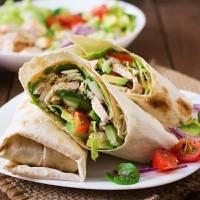
Whether eaten cold or heated, products such as bowls, salads and wraps are often enhanced with meat-based toppings, such as grilled fillet strips.
“Plant-based food altogether is constantly rising as the urgent need for an ecological balance has very much come into the public consciousness,” Henrik Hetzer, managing director of Loryma, tells FoodIngredientsFirst.
Convenience prevails
Especially given the situation around COVID-19, eating in restaurants and at work has declined, and there has been a surge in the number of people dining at home. “As a result, ready-to-eat meals are trendy,” Hetzer notes. Whether used as a salad topping, a filling or eaten hot from the pan or oven, the vegetable fillets demonstrate optimal interaction of functional binding and structured wheat protein, he continues.
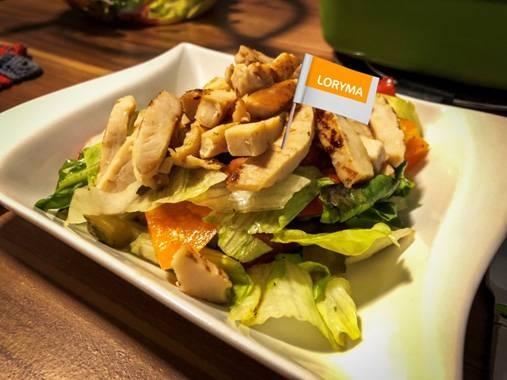
Convenience products such as bowls, salads and wraps are often enhanced with meat-based toppings. Consumers are not only looking for meatfree alternatives, but they also seek tasty products with the right texture that creates an authentic mouthfeel, Hetzer notes.
Besides its uses in convenience food, these ingredients can serve industry in a wide range of other applications, including confectionery and baked goods.
Wheat above the rest
Appeasing all the senses
Wheat has previously shown potential in the plant-
Functional wheat-based raw materials allow for creating meat alternatives that are convincing in sensory perception and taste. They are also suitable sustainable raw material, which is multifunctional,”
for a wide range of applications thanks to simple production processes.
The processing of a vegan chicken breast does not differ much from the meat version, according to Loryma.
First, dry Lory Tex Chunks are soaked in water and individually seasoned, with the textured wheat protein replicating the authentic meat structure. The rehydrated chunks are then shredded and mixed with vegetable oil and the wheat-based binding agent Lory Bind to form a homogenous and thus help prevent food waste, flags Hetzer. “Wheat ingredients can increase the protein content of the final product, while the carbohydrate content decreases. Wheat texturates are therefore perfectly suited to the trend toward health-conscious lowcarb or high-protein products,” he continues.
“Doing without animal protein does not reduce the nutritional value. The mix of different vegetable proteins provides the human body with an equivalent supply of essential amino acids.”
based movement. With regards to sustainability, it also is beneficial as a crop.
“An advantage of wheat is the bio-dynamic value of the original agricultural product. Wheat is a mass in an “all-in” process.
explains Hetzer.
This mass can then be individually processed, just like the meat variant, and is usually filled into sterile casings. It is then cooked before being removed from the casing and pre-portioned.

The fillet can be grilled or deep-fried as strips, nuggets, slices or cubes, and the finished product used in the same way as real cooked chicken breast.
Bolstered nutritional value
In industrially produced foods, texturized wheat proteins optimize nutritional value, extend shelf life
Wheat-based ingredients can also serve industry in a wide range of other applications, including confectionery and baked goods, says Loryma.
The wheat starch industry achieves almost complete recycling with a yield of 99 percent, he says.
Due to its regional availability, there are low transport emissions, and during growth, the plants bind large amounts of CO2.
Growing EU wheat
Wheat is cultivated worldwide on around 220 million hectares, making it the most important crop globally, Hetzer comments. “However, all plants must be able to cope with changing climatic conditions,” he stresses.

Research is being conducted to make wheat varieties more resistant to climate change. In principle, availability is not at risk. However, the quality of the wheat – for example, yield and nutritional value in terms of starch and protein – depends on the climate and soil conditions.
To ensure consistent product quality, Loryma uses 100 percent EU wheat, at least 75 percent of which comes from Germany.
“Within this range, we make use of the diversity of growing regions and varieties. This consistent product quality is important for our customers to ensure the safe processing of their endproducts,” Hetzer concludes. By Elizabeth Green
By Elizabeth Green
SINGAPORE grants “world’s first” approval for sale of Eat Just’s cultured meat By Benjamin Ferrer
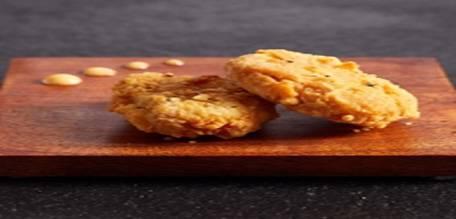
Cultured chicken meat from Eat Just has been greenlighted for sale in Singapore as an ingredient in chicken bites. The island nation is the first to give the go-ahead to meat being grown in a lab. It follows a rigorous consultation and review process by the Singapore Food Agency (SFA).
This approval is anticipated to be the “first of many” for similar lab-grown meat businesses in Singapore and in countries around the globe. However, US and European approval of cultured meat could be some of scientists, product developers and regulatory experts prepared extensive documentation on the characterization of its cultured chicken and the production process, the company notes.
The company included details on the purity, identity and stability of chicken cells during manufacturing, way off.
as well as a detailed description of its production process. This demonstrated that harvested cultured chicken met quality controls and Singapore’s rigorous food safety monitoring system.
SFA’s approval further paves the way for a forthcoming small-scale commercial launch in Singapore of Eat Just’s new GOOD Meat brand. Details on this rollout will be disclosed at a later date.

At present, the company has developed other labgrown chicken formats that will be an extension to this product line.
Food Ingredients First reached out to Eat Just for further insights into the company’s road to commercialization.
Eating clean from a petri dish
Over the course of many months, Eat Just’s team The analysis demonstrated that cultured chicken contains a high protein content, diversified amino acid composition, healthy monounsaturated fats
and a rich source of minerals. Eat Just has demonstrated a consistent manufacturing process of its cultured chicken by running over 20 production runs in 1,200 L bioreactors. No antibiotics are used in this proprietary process.
Safety and quality validations demonstrated that harvested cultured chicken met the standards of poultry meat, with “extremely low and significantly cleaner” microbiological content than conventional chicken. In other developments, Singapore-based venture capital firm and business accelerator Big Idea Ventures attracted more investors to its alternative protein fund, including Bühler, Tyson and Temasek.
Just yesterday, we reported how a new project aims to remove the need for animal-derived products completely and instead upcycle existing agro-industrial by-products to be used as a growth media for culturing meat cells in a lab environment.
The analysis also demonstrated that cultured chicken contains a high protein content, diversified amino acid composition, high relative content in healthy monounsaturated fats and a rich source of minerals. UK-based CPI technology innovation center is partnering with 3D Bio-Tissues (3DBT) – a spin-out of Newcastle University – to develop a new kind of improved growth media, one that is “truly animal-free.”
In addition, Eat Just’s cultured chicken was confirmed to be safe and nutritious for human consumption by an outside panel of international scientific authorities in Singapore and the US, with expertise in medicine, toxicology, allergenicity, cell biology and food safety.
Concurrent to the consultation and review period, Eat Just formed strategic partnerships with local manufacturers in Singapore to produce cultured chicken cells and formulate the finished product ahead of its first sale to a restaurant and initial availability to consumers.
A hub for cellular agriculture
Today’s announcement is Eat Just’s second in Singapore this year. In October, the company announced a partnership with a consortium led by Proterra Investment Partners Asia, an investment management firm focused on the food and agribusiness sectors.
Through this partnership, the company will build and operate a plant protein production facility in Singapore to meet demand for Eat Just’s plant-based JUST Egg products across Asia.
“Singapore has long been a leader in innovation of all kinds, from information technology to biologics to now leading the world in building a healthier, safer food system,” says Josh Tetrick, co-founder and CEO of Eat Just.
The “garden city” has been leading the charge in Asia’s alternative protein development. This year, Singaporean cellular agriculture player Shiok Meats announced its US$12.6 million Series A funding round for the scaling up of cell-based shrimp meat.
Growing meat to save the planet
Meat production has risen dramatically, and by 2050, consumption is projected to increase over 70 percent, flags Eat Just. The company stresses that major public health crises in the past have been linked to patterns of conventional meat consumption.
Within this context, cultured meat’s role in creating a safer, more secure global food supply has been increasingly highlighted. The last year has seen a steady rise in the application of animal cell culture technology toward the development of food products.
Yet many current methods of producing cultured meat are still expensive – producing low yields and involving the use of animal-derived fetal bovine serum.
Among developments in this dynamic space, Israeli startup is heading toward transferring its thin-cut, lab-grown beef steaks into a proprietary platform suitable for mass cultivation. In a recent interview with FoodIngredientsFirst, Didier Toubia, Aleph Farm’s co-founder and CEO, detailed the company’s latest ambitions to supply cultivated meat for deep-space explorations.
Meanwhile, recent analysis has indicated substantial potential markets for cultured meat and the general movement toward reduced-meat diets across the globe, particularly in Germany and France. The wider European market is expected to demonstrate similar trends into the coming years.
TRAVEL INC
Planning a road trip in a pandemic? 11 tips for before you leave, on the road and when you arrive
As restrictions ease around the country and the prospect of travel beckons, many of us will be planning road trips for the holiday season.
To ensure your trip is memorable in the best rather than the worst way, here are some things you and your fellow travellers can do to reduce the risk of becoming infected with, or spreading, Covid on your trip.

Before you go ..
1. Check for any travel or other Covid-specific restrictions or rules in the areas you will be travelling through or to, before you go. These can change rapidly and may include restrictions on how far you can travel, how many people per square metre are allowed in public spaces, and whether you need border passes or to wear a mask. Each state or territory has its own health department or government Covid website you can check.
2. Don’t take Covid with you. If anyone in your group has Covid-like symptoms, however mild, it is important to be tested and cleared for Covid before leaving. Common symptoms may include fever or chills, muscle aches, sore throat, cough, runny nose, difficulty breathing, new loss of taste or smell, and vomiting or diarrhoea.
3. Pack masks, disinfectant wipes and hand sanitiser. The two most likely ways of catching Covid are inhaling viral particles an infected person sheds when they cough, sneeze, laugh, talk or breathe; and ingesting particles by touching contaminated objects and then touching your face or food. Masks (and social distancing) can help reduce the former risk, while avoiding touching your face, frequent hand hygiene and cleaning surfaces can reduce the latter. So pack masks, wipes and hand sanitiser. Hand sanitiser should contain at least 60% alcohol.
4. Pack your own pillows and linen. We know people infected with SARS-CoV-2, the virus that causes Covid, can shed virus onto linen and pillows (and other surfaces), even when asymptomatic. We also know respiratory viruses can penetrate pillow covers and get into the microfibre stuffing. So you might want to consider bringing your own pillows and linen.
On your trip
5. Use disinfectant wipes to clean high-touch surfaces in your hire car. These would include door and window handles or buttons, light switches, seat adjuster controls, radio controls, the steering wheel, glove box button, gear/drive and handbrake levers, rear-view mirrors and mirror controls.
6. How about singing in the car? The more vigorous the activity, the greater the opportunity to release droplets and aerosols and the further these will travel. So, laughing and singing will release more of these than talking, and talking will release more than breathing. However, if you are travelling in a family group, or with your housemates, then you have been in close contact with one another at home and the additional risk would be low.
7. Maintain social distancing at service stations. Leave at least 1.5 metres between you and the next person while paying for fuel, ordering food and when using the bathroom. Make sure you wash or sanitise your hands after touching surfaces such as petrol pumps, door handles, bathroom taps, and before getting back in your car.

8. Pay with cards rather than cash to avoid touching
money. Many people can handle bills and coins over a long duration of time, providing many opportunities to transfer disease-causing microbes from one person to the next. Using contactless payment also helps maintain social distancing.
9. It’s safer to eat outdoors than indoors if stopping for
a snack or lunch. That’s because large volumes of air dilute the density of viral particles in the air. Evidence from a study of Covid clusters in Japan suggests the chance of transmitting Covid is more than 18 times higher inside than outside.
When you arrive
10. Is your hotel or rented accommodation Covid-safe?
Ask the accommodation provider what steps they have taken to make the place less conducive to spreading Covid. For example, have they introduced extra cleaning or disinfection?
11. Use disinfectant wipes in rented accommodation to clean high-touch surfaces such as door handles, light switches, cupboard handles, taps and toilet flush buttons. You can also put dishes and cutlery through the dishwasher on a hot cycle. This is because the virus can remain viable (able to cause infection) on surfaces for many days.

Following these simple steps can help to keep your trip memorable in the best possible way.
Happy holidays!



2021




